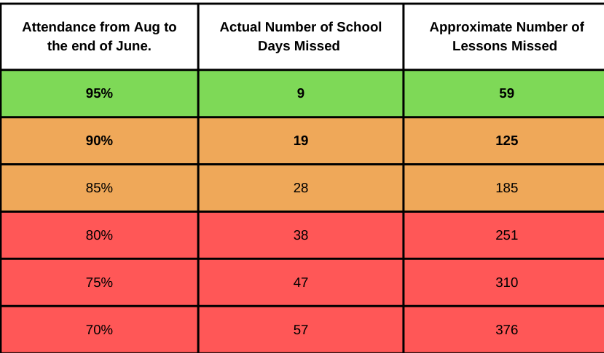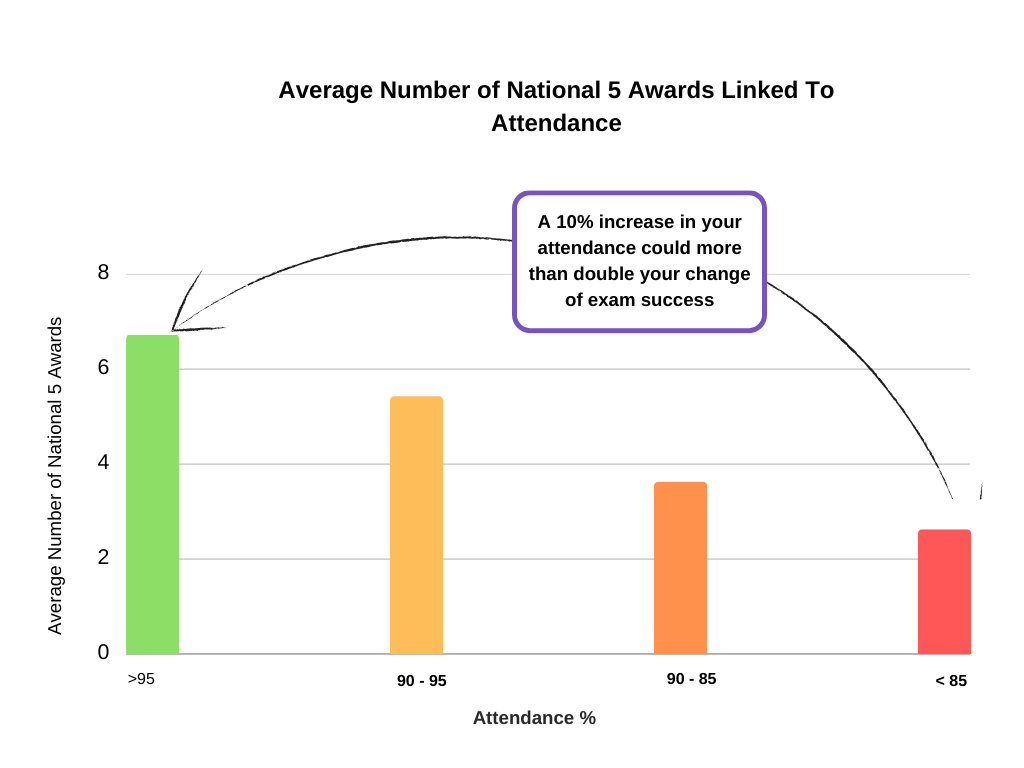Recording
Standard Circular 5 outlines our local authority recording procedures, and thresholds where particular actions are necessary, such as when formal letters may need to be sent to families. These formal procedures are necessary as some families will need to be reminded of their legal obligations, the schools’ level of concern and the negative impact absence can have. Included, engaged and involved part 1: promoting and managing school absence, provides advice on how to consistently classify and record attendance and absence.
Monitoring
Analysis of attendance data prior to the covid pandemic indicated that young people with additional support needs, those in receipt of free school meals, those with care experience, and those from SIMD 1-3, were likely to have lower attendance, with many of the most significant EBSA cases featuring these risk factors. Given the explicit links between attendance and attainment, it is clear to see that this area is fundamentally important in addressing the poverty related attainment and wellbeing gap.
Schools should use their attendance data to develop a rich understanding of the unique challenges they are facing within their local community. Whole school, class and individual attendance data can be used to identify patterns of absence across a school day, week or year. Regular analysis will help practitioners to understand the possible causes of EBSA for individuals and groups of vulnerable learners in their school and ensure they are evidence-informed in their response.
Responding
Developing effective investigation and response procedures at set thresholds (for example under 95% attendance, under 90%, or at points of transition) is an extremely effective way of maintaining high attendance standards, and identifying and supporting vulnerable children, young people and families at an early point in time, before associated EBSA challenges become significant and more resistant to change.
Depending on the size and circumstances of the school, having a dedicated practitioner who has oversight of this area can help ensure consistency, early communication and, critically, early intervention. Early communication with parents and carers is advised in order that everyone involved in the child or young person’s life is able to understand why school absence is a concern and how it can be best supported.
Effective communication and information sharing about the impact of low attendance can also help establish a positive culture around attendance in school communities. Examples of attendance thresholds, including the related number of daily absences, and how this translates to lessons missed in a secondary school context, are shown in Figure Three.
Attendance thresholds and associated days absence across the school year:
Attendance
This table shows that a young person with an attendance rate of 70% in June has been absent for 57 days; this is the equivalent of 376 lessons. An attendance rate this low would make it extremely difficult for a young person to achieve their academic potential.

One of our local high schools distributed individualised attendance statement letters and leaflets to all pupils, referencing this data, and with a positive focus on the impact that any improvement might have on the young person Appendix C. The graph below, based on local authority data, demonstrates that there is a clear link between school attendance and the average number of National 5 awards attained.

